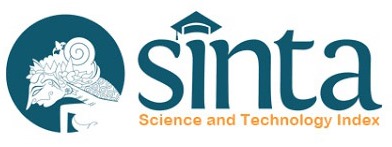Astaxanthin produced by marine bacteria: biosynthesis, uses, and the potency of mass production
Abstract
Astaxanthin (3,3‘-dihydroxy-β, β-carotene-4, 4’-dione) is an orange-red xanthophylls that contains 40 carbon atoms which is connected by single and double bonds to form fitoen chains inwhich their all-trans isomer are found in nature together with a small amount of 9-cis and 13-cisisomers. Fitoen chains of astaxanthin begin and end by ionon chains. Astaxanthin belongs to thexanthophylls group because it has oxygen rings. Some marine bacteria are reported to produceastaxanthin i.e Brevundimonas, Paracoccus hundaenensis, Alcaligenes andAgrobacteriumaurantiacum. This paper describes astaxanthin production in marine bacterial cells including itsbiosynthesis from β-carotene conversion and enzyme taking a role in this biosynthesis, and itsmass production for commercial purposes. This review also describes about their uses for foodand health purposes.
Keywords
astaxanthin, marine bacteria, Paracoccus sp
Full Text:
PDFDOI: https://doi.org/10.15578/squalen.44
Refbacks
- There are currently no refbacks.
ISSN : 2089-5690(print), E-ISSN : 2406-9272(online)
This work is licensed under a Creative Commons Attribution-NonCommercial-ShareAlike 4.0 International License.










